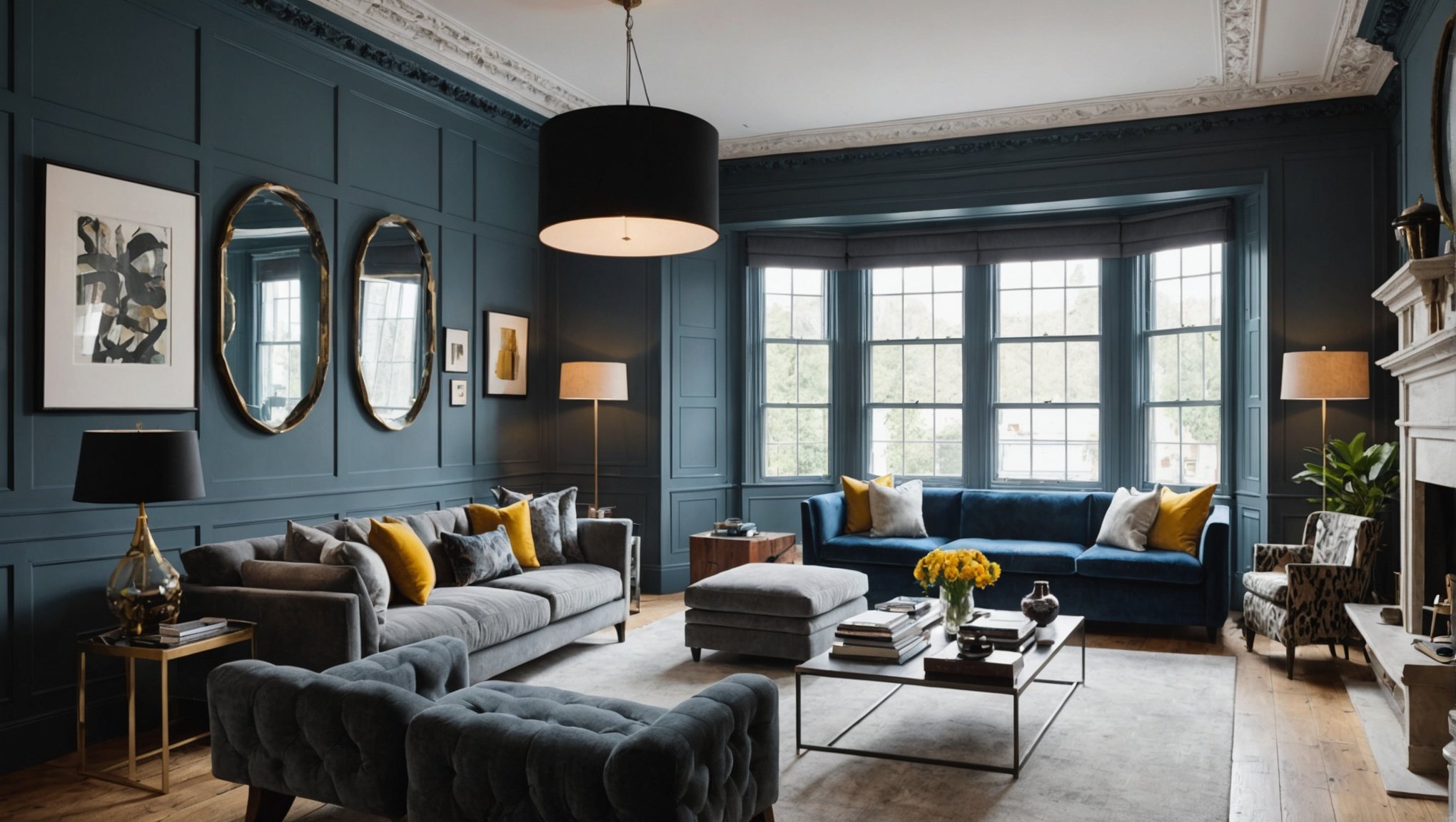Unlocking Design Secrets: Effective Blogging Strategies for UK Interior Design Firms to Share Expert Tips
In the competitive world of interior design, establishing your firm as a authority and attracting potential clients requires more than just exceptional design skills. One of the most effective ways to stand out and build a loyal client base is through blogging. Here, we will delve into the strategies that UK interior design firms can use to create high-quality blogs that share expert tips, drive business growth, and foster long-term relationships with clients.
Why Blogging is Crucial for Interior Design Firms
Blogging is not just a marketing strategy; it is a powerful tool for establishing your design business as a trusted and knowledgeable resource in the industry. Here are a few reasons why blogging should be a cornerstone of your marketing efforts:
Also to see : Maximize Your Impact: UK Fitness Trainers” Guide to Leveraging Instagram Reels for Quick Workout Tips
- Establish Authority: By sharing expert tips and insights, you position your firm as a leader in the interior design industry. This builds trust with potential clients and sets you apart from competitors.
- Attract and Engage Clients: Blogs can attract organic traffic through search engines, bringing in people who are actively looking for design advice. Engaging content keeps these visitors coming back, increasing the chances of converting them into clients.
- Showcase Your Work: A blog is an excellent platform to showcase your design projects, highlighting your skills and the quality of your work.
- Stay Updated with Design Trends: Regular blogging helps you stay current with the latest design trends, which is essential for maintaining a competitive edge in the design industry.
Identifying Your Target Audience
Before you start blogging, it’s crucial to understand who your target audience is. Here are some steps to help you identify and cater to your audience:
Understand Their Needs
- Homeowners: Many of your readers will be homeowners looking for inspiration and practical tips to improve their living spaces.
- Potential Clients: Some readers may be potential clients researching design firms and looking for expertise.
- Design Enthusiasts: Others might be design enthusiasts who follow trends and enjoy learning about new design ideas.
Create Buyer Personas
- Develop detailed buyer personas to guide your content creation. For example:
- Sarah the Homeowner: A 35-year-old mother of two looking to renovate her kitchen.
- Mark the Investor: A 40-year-old real estate investor seeking high-end design solutions for his properties.
Tailor Your Content
- Use language and topics that resonate with your audience. For instance, if you’re targeting homeowners, focus on practical DIY tips and budget-friendly design solutions.
Crafting High-Quality Content
High-quality content is the backbone of an effective blogging strategy. Here’s how you can create content that resonates with your audience:
In the same genre : Maximizing Email Marketing: Effective Strategies for UK Specialty Bakeries to Launch Limited-Edition Pastries
Focus on Evergreen Topics
- Timeless Design Tips: Write about design principles that remain relevant over time, such as the importance of lighting in a room or how to choose the right color palette.
- Seasonal and Trendy Content: Balance evergreen content with seasonal and trendy topics to keep your blog fresh and current.
Use Engaging Storytelling
- Case Studies: Share real-life case studies of your design projects, highlighting the challenges and solutions.
- Behind-the-Scenes: Give readers a glimpse into your design process, showing how you create and bring designs to life.
Incorporate Visuals
- High-Quality Images: Use high-quality images and videos to illustrate your points and showcase your work.
- Infographics and Tables: Create infographics and tables to present information in a clear and visually appealing way.
Example of a Detailed Blog Post
Here’s an example of how you might structure a detailed blog post on kitchen design:
Title: “10 Essential Tips for a Perfect Kitchen Design”
- Briefly introduce the importance of a well-designed kitchen and what readers can expect from the post.
Tip 1: Choose the Right Layout
- Discuss the different kitchen layouts (L-shape, U-shape, island) and provide tips on how to choose the best layout for a specific space.
Tip 2: Select Functional Materials
- Talk about the materials that are best suited for kitchen countertops, floors, and cabinets, highlighting their durability and aesthetic appeal.
Tip 3: Optimize Lighting
- Explain the different types of lighting (ambient, task, accent) and how to use them effectively in a kitchen.
- Summarize the key points and encourage readers to share their own kitchen design experiences.
Leveraging Social Media and Email Marketing
Blogging is just the first step; you need to get your content in front of your target audience. Here’s how you can leverage social media and email marketing:
Social Media
- Platforms: Focus on platforms like Instagram, Pinterest, and Facebook, where visual content thrives.
- Engage with Followers: Respond to comments, engage in discussions, and use relevant hashtags to increase visibility.
- Share Behind-the-Scenes Content: Share snippets of your design process, sneak peeks of new projects, and other behind-the-scenes content to keep your followers engaged.
Email Marketing
- Newsletter: Create a monthly or bi-monthly newsletter that summarizes your latest blog posts, shares exclusive tips, and offers special promotions.
- Direct Mail: Use direct mail campaigns to send physical copies of your blog posts or design guides to potential clients.
Measuring Success and Adjusting Your Strategy
To ensure your blogging strategy is effective, you need to measure its success and make adjustments as necessary.
Key Metrics to Track
- Website Traffic: Monitor the number of visitors to your blog and the pages they visit most.
- Engagement: Track comments, shares, and likes on your blog posts.
- Conversion Rates: Measure how many readers convert into clients or leads.
Adjusting Your Strategy
- Analyze Feedback: Pay attention to reader feedback and adjust your content accordingly.
- Stay Flexible: Be willing to change your strategy if certain types of content are not performing well.
Practical Tips for UK Interior Designers
Here are some practical tips that UK interior designers can use to enhance their blogging efforts:
Collaborate with Other Designers
- Collaborate with other designers or industry experts to bring diverse perspectives and ideas to your blog.
Use SEO Best Practices
- Optimize your blog posts for search engines by using relevant keywords, meta descriptions, and optimizing images.
Offer Exclusive Content
- Offer exclusive content or free resources, such as e-books or design guides, to encourage readers to subscribe to your newsletter.
Table: Comparing Popular UK Interior Design Blogs
Here is a comparison of some popular UK interior design blogs, highlighting their unique features and strengths:
| Blog Name | Frequency | Domain Authority | Unique Features |
|---|---|---|---|
| The Design Sheppard | 6 posts/month | 45 | Rounds up the best in interior home design; features interviews with experts. |
| Society of British and International Design | 1 post/day | 49 | Promotes the profession of interior design; shares professional perspectives. |
| Topology Interiors Blog | 3 posts/quarter | 43 | Focuses on affordable interiors; includes house tours, DIY tips, and industry talk. |
| Graham & Brown Blog | Varies | – | Offers practical guides on wallpaper, painting, and other home decor tips. |
| Oraanj Interiors Blog | Varies | – | Features captivating ideas, trending styles, and expert tips on interior design. |
Quotes from Industry Experts
Here are some quotes from industry experts that highlight the importance of blogging in the interior design business:
- “Blogging is a great way to showcase your expertise and build trust with potential clients. It’s not just about selling your services; it’s about educating and inspiring your audience.” – Stacey Sheppard, The Design Sheppard.
- “The right lighting can make all the difference in how you feel in your home. Sharing tips on lighting and other design elements through our blog has been incredibly effective in engaging our audience.” – Nate Berkus, as quoted in Oraanj Interiors Blog.
- “By sharing our design process and tips through our blog, we’ve seen a significant increase in client inquiries. It’s a powerful way to demonstrate our capabilities and build a loyal following.” – Sean Hill, RISE Design Studio.
Blogging is a powerful tool for UK interior design firms to share expert tips, build their brand, and attract potential clients. By understanding your target audience, crafting high-quality content, leveraging social media and email marketing, and continuously measuring and adjusting your strategy, you can unlock the full potential of blogging for your design business. Remember, the key to successful blogging is to create content that is valuable, engaging, and relevant to your audience, helping you establish a strong presence in the competitive world of interior design.











